Hello all,
I do plenty of work for others but this project is for me.
I am building an addition with master bedroom ,2nd bedroom,master closet and master bathroom above a two car garage. The garage wont be heated. I am using 9 1/2 inch “I joists” for my floor joists. My questions are.
1. How to insulate properly to avoid cold hardwood floors .
2.How to insualte and heat bathroom floor with tile.
Keep in mind I will have some plumbing in the floor system.
My plan was to install baseboard in all rooms but the bathroom on a new zone. I only have a 5′ section of wall to install a baseboard in the bathroom so I was thinking radiant floor mats or pex tubing.The rest of the house is a two zone oil baseboard system that is not so new. Should I be thinking radiant floor heat throughout? Does it cost more or less than baseboard to run? I live in North Jersey . It gets cold in the winter so keeping it warm is important.
Edited 2/15/2007 10:42 pm ET by AllTrade
Edited 2/16/2007 9:07 am ET by AllTrade
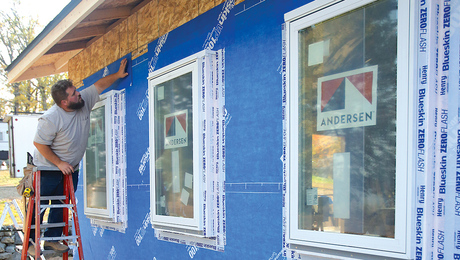
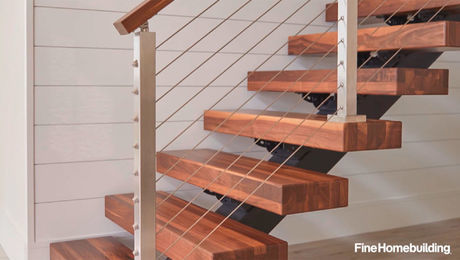
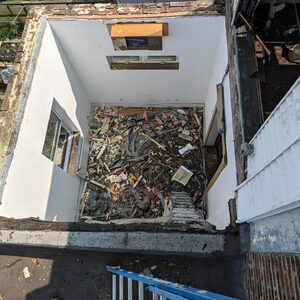
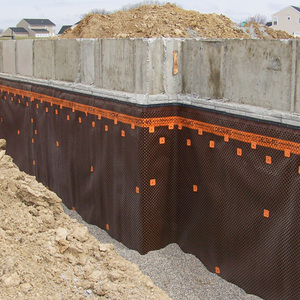
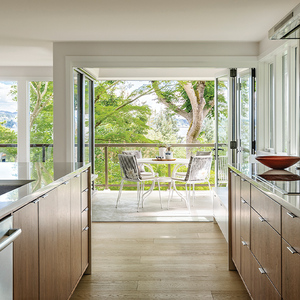
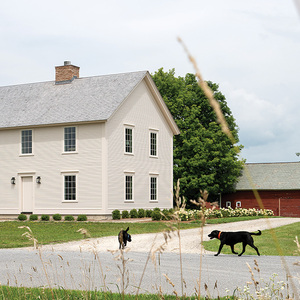




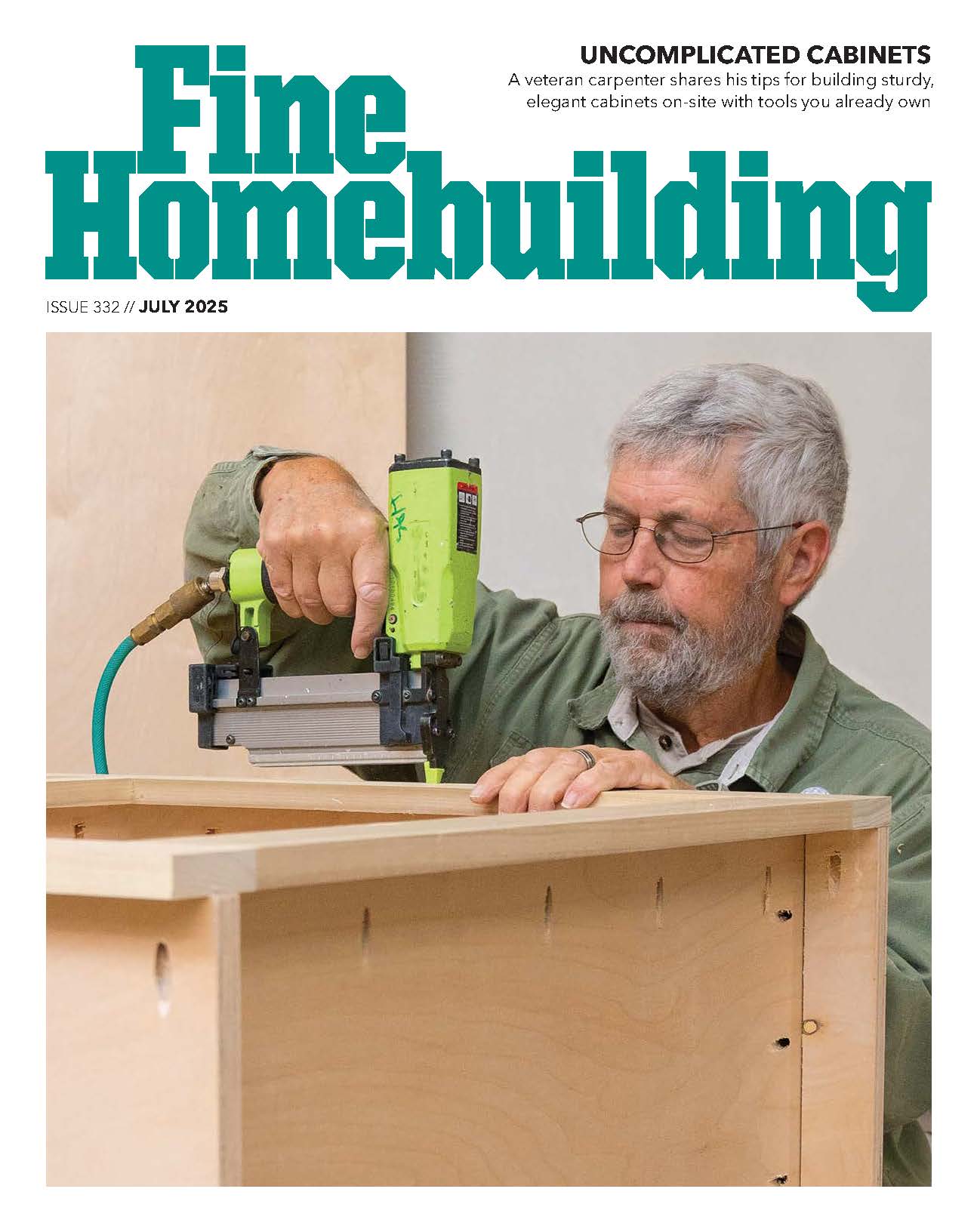








Replies
You've been around here long enough to know that the first thing they're gonna want to know is where you're located. Since you haven't filled in your profile, we have no clue.
He's in North Jersey
Its for you. By all means do radiant. Staple up with plates is simple, and doable above your garage. Press foam board to the underside of the top chord of your I joist, then regular fiberglass below. If you can build an addition, you can do radiant.
You will never regret the radiant decision - be sure to do the very best insulation job too - this goes hand in hand with radiant.
Thanks. So I should add radiant to the floor of the addition instead of baseboard install it stapled to and under the 3/4 osb with plates , my 3/4 flooring attached on top of the osb and add the ridgid foam board against the bottom of the top web foil up. Then install r-22 under that with paper side up?I may heat the garage from time to time to work in it and normaly I would install the insulation with the paper side up. Does my heating below every so often change that view?
1. How does radiant compare as far as cost goes for the monthly bill vs baseboard? My brain tells me heating all that water has got to cost more and put more of a strain on the system pumping it all. I am sure that it feels much better ,but is it worth it?
2. Should I simply start with copper at the furnace , run to my garage install a manifold so I can use 200' for each of three loops to complete the total 0f 600' needed and return to the furnace through another manifold and back with copper? I would then have my heating guy install every thing else at the furnace location. 16" on center would be the spacing of joists. So he would have a feed and a return at the furnace to work with plus a thermistate.
3. Does the fact that I will be installing tile in one room change things? That room would have 1/2" hardiboard installed on top of the 3/4 osb. I read thats it good to space out the plates with 8" gaps under the tile, why?
4. Would I run the tubing under the tub area? The shower( tiled built in)? I would assume it would create moisture problems agaist the underside of the tub/tile.
5. Also I will have pipes such as water supply and drainage between the ridgid and fiberglass insulation yes?
6. Is this a good explaination? http://www.radiantcompany.com/details/joists.shtml
Edited 2/16/2007 11:01 am ET by AllTrade
Edited 2/16/2007 11:09 am ET by AllTrade
Edited 2/16/2007 11:11 am ET by AllTrade
AT - I am not a radiant expert (I've done 4 houses, two were mine) but I am a proponent, since I pay my heating bills and like warm feet. Its worked for us, and quite well.
1. I cannot speak for the cost of heating, too many variables. We are using a Bock Oil Fired Water Heater - it is very efficient, and cheaper (for us) than electric baseboard.
2. I'd have an insulated "mechanical room" for your heater and manifold. I ran 3/4 pex from the heater to the manifold, then 1/2" pex for the loops. I have a loop every 8" (2 per joist bay)
3. My design temperature is 150 degrees, and I only used aluminum plates under the bathroom floors. Stay away from your toilet if you have a wax ring (there are alternatives) The heat could melt the wax.
4. I have tubing under my tub - I don't see where it would be an issue
5. There will be plenty of room for everything - I have the same joists you do. Run your radiant after other plumbing is roughed in. They would be insulated as normal, but I'd keep the supply pipes as close to the floor as possible.
6. Yes, but that is just one way. I have 2 - 1/2 pex lines per bay, so they just go to the end and double back - no drilling needed. The plates are nice, but can create ticking sounds as the tubing takes on heat. It depends on what temperature water you run - lower requires plates, higher (mine) doesn't. Since you are above an unconditioned space, I would go for as much transfer as possible (belt and suspenders)
There are big arguments over this, but I know a lot of guys who are using high efficiency water heaters for their heat source. Search jlconline for an article by bill clinton (not him) on this.
One negative would be that you cannot let the house freeze - some heat must always be present or pipes would burst. Having said that I've had pex lines freeze 5 or so times this winter in my unfinished garage laundry room and not burst.
Good luck!
Treat every person you meet like you will know them the rest of your life - you just might!
thanks all , so far so good. Any thoughts on what type or manufactor pex tubing I should use. Pex all with foil inside or is there a standard? Any thoughts on where to buy?I plan on using metal plates that I'll make myself.
Also whats the take on using a water heater instead of my furnace for the new zone?
Look on pexsupply.com - I used them for the last job - the prices are really good
You generally want an oxygen barrier.
I have used and like Mr Pex tubing, which has a much nicer feel than the zurn tubing I can get locally. It also bends in a 4" radius, which can be nice between joists.
The water heater/boiler controversy has strong adherants on both sides. I'm on the water heater side for simplicity, cost, and the inability of any local boiler installers to return my calls.
Treat every person you meet like you will know them the rest of your life - you just might!
What Brian said. You'll never regret radiant heat.
I had a client that had a large roman tub built into a cantilever. This basically left his pipes exposed to weather. He had problems with the drain freezing.
I'm telling you this because like you he has baseboard heat and we fixed his problem by running a loop from the radiant alongside the pipes for his tub. No problems since.
You may want to consider this if your gonna have a bathroom above an unheated garage.
Very good idea ,I'll run under the tub. TY
Thanks for the tip on the web site I'll give it a look.
Where online can I get a good heat loss calculator. I found one but it does not have all the choices needed at http://h-mac.com. but it came up with a 15,900 btuhs heat loss 4659 watts for my 26x30 addition with four 6sq ft each windows,framed floor R-22 ceiling R-30 and walls R-17. One 26' wall is against the heated house,. Would this be good for a good hot water heater to run the in floor radiant or would a furnace be the choice?
Here is an easy one to use and it is free.http://www.hvaccomputer.com/hvac/sizer.aspThis is suppose to be a good one.http://www.hvaccomputer.com/.
.
A-holes. Hey every group has to have one. And I have been elected to be the one. I should make that my tagline.
heat loss calcs are all based on non-proveable assumptions.. so .. pretty much any HVAC book can lead you thru the calcs
the hardest assumption to come up with is air-exchanges per hour...
btw... on your garage floor.. if you want to do the staple up.. immediately under teh reflective shield, i'd install 2" foam.. and i'd foam it in place
across the bottom of the joists, i'd install 1" eps and furr that.. then i'd blow the space between the 2 foam panels with cellulose, dens-pak
oh.... and no copper, pex only
Mike Smith Rhode Island : Design / Build / Repair / Restore
Edited 2/19/2007 12:30 pm ET by MikeSmith
that hvac load program looks exceptional so i dounloaded it- DOESNT WORK ON A MAC!!!!! i finally get a system that works flawlessly only to find that the world really is full of bill gates butt-lickers. i know this not on topic, but i just get so mmaaadddd! sorry, frank
Yes I ran it here on windows / excel and it worked well. Time to buy in to Mr Gates, LOL
Do the numbers it came up with sound close for the addition? If so what size/type water heater should l get? Also I was thinking of running my hot water and my radiant heat for the addition only on it. Letting the old furnace do the rest as it does now and I would no longer need the coil to do the hot water thereby eliminating the need for the furnace to run in the summer and reducing its load in the winter. We don't like the coil any way , never enough hot water.
Do these set ups work well or should I be looking elswhere?
http://www.radiantcompany.com/system/open.shtml
The radiant heat and potable hot water should not come from the same water heater.
Thanks I, thought it might be a bad idea. What water heater would you reccomend for just heating the 780 sq. feet?
I've used 40 gal. propane or NG . Most of these are in the 40,000 btu range.
I have heard that before - why?Treat every person you meet like you will know them the rest of your life - you just might!
Plumbing codes prohibit potable water and water for heating purpose's from actualy mixing.
The water thats used for heating has most of the air driven out of it by the heat cycle, it's then released by the air seperator. This makes the water a better heat conductor,prevents air pockets which can restrict flow and cause water hammer.
This creates some pretty nasty water, and has the possibilty of creating the proper enviroment for certain types of bacteria.
The reason I ask is my last two houses have had very simple, "open" (mixed) systems. We circulate the pumps from time to time in the summer to keep the water fresh. Maybe the codes are different here...
I'm not arguing for one or the other, I just have never heard a compelling argument for the added expense of a separate system. I have installed separate systems for others, and will probably always go that route, unless they want otherwise, but haven't seen the need to do so for my house.
Still learning...
Treat every person you meet like you will know them the rest of your life - you just might!
Legionare disease.
Leggionnaires?
Its a valid (and rare) concern with water temps below 120, and no circulation.
Its a concern with any potable hot water system, by the way, but no one in the other 95% of houses seems to be alarmed.
My system is 150 degrees, and will circulate the water to prevent stagnancy.
Other than Legionellosis, are there other concerns?
Treat every person you meet like you will know them the rest of your life - you just might!
What...you didn't get the Intel dual core and set it up to run OS X or XP !!!!!! I'm shocked ;-)
Well I am in the planning stages so if anyone has a good overall plan for me I would love to here it. 26x30 two car garage with two beds and a bath above. If heating the garage floor is a good idea and does not cost to much a year I may be open to the idea. We have the old furnace doing the house right now but i don't think it can handle the new addition .It might be a good time to replace the whole system and just do a new furnace and indirect hot water heater but i can also just add the hot water heater and keep this system going. P
I have my footings done and half the poured walls at this point so after finishing the walls I will be ready to frame and pour floors. I do have some time as it is cold right now and i don't want to pour again until above 50 f.
Edited 2/20/2007 1:07 pm ET by AllTrade
unheated below, I would consider bumping up those I joists to the next size to get more R value in there
Even with the radiant floor heat,plates ,1" poly board with reflevtive foil against the upper web under it. Then r-22 below that and dbl 5/8 sheet rock against ?
I agree the floor is gonna be warm but lets think about efficiency also. unless he goes with closed cell spray insulation theres gonna be a large heat loss. thats ok if he wants to keep the garage warm too
I agree the floor is gonna be warm but lets think about efficiency also. unless he goes with closed cell spray insulation theres gonna be a large heat loss. thats ok if he wants to keep the garage warm too
Yes it will - in the first place where I did this, there was some heat loss to the garage, but it was insulated, and it was enough to keep things decent in the coldest of winter.
On the heating the floor - I assume were talking the garage floor. It would be nice to have a set of tubes there for the coldest week or two of winter. Tubes are cheap, and I wish I had done it.
Treat every person you meet like you will know them the rest of your life - you just might!
I was thinking of doing that actually but radiant takes a long time to heat all that slab so using it on those cold days might be wastful. I have a large propane heater I use on the job site that I can fire up to work in the garage. My only worry is the vapor barrier in my ceiling. I would have heat above and below it. Is this a problem. Am I better off keeping the garage with radiant heat going at lets say 50 f all the time and leaving out the vapor barrier in between or just do the spray on ? If I do heat a garage with 2x4 walls and insualted doors at 26x30 should I expect a big bill?
With such a large space and little insulation, I would expect a big bill.
I cannot comment on the vapor barrier issue - I just don't know.
For intermittent use, the propane heater seems like a good solution.
My garage has 12' ceilings and the heat disappears... thats why I wish I had something in the slab to evaporate water and keep the cars warmer on the coldest two weeks of winter we have each year. I have thought about timers and ceramic heaters inside the cars...
Treat every person you meet like you will know them the rest of your life - you just might!
What would be the temp to shoot for in the pex ?I have heard so many dif temps.
Should I treat the tile floor in the bath any differant? is there an advantage to coming up with the pex in that room and setting in thinset?